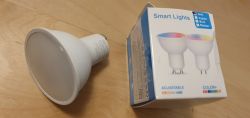Hello,
I will soon be converting the installation from 2 wire (1988r) to normal. As forging is unavoidable - I would like to add other installations as well - alarm, SAT for a few rooms, Ethernet, and maybe a control for the Smart Home.
What's worth doing? Maybe some other ideas still?
Give Eth cables to each room?
Give alarm cables to every outside door and window?
Should I base the smart home on a wired installation or a wireless one (e.g. something like Fibaro)?
If on a cable, are there any modules for sockets, lighting that can be bought?
I will soon be converting the installation from 2 wire (1988r) to normal. As forging is unavoidable - I would like to add other installations as well - alarm, SAT for a few rooms, Ethernet, and maybe a control for the Smart Home.
What's worth doing? Maybe some other ideas still?
Give Eth cables to each room?
Give alarm cables to every outside door and window?
Should I base the smart home on a wired installation or a wireless one (e.g. something like Fibaro)?
If on a cable, are there any modules for sockets, lighting that can be bought?






